 A Monthly Column By Hal Tretbar
A Monthly Column By Hal Tretbar
Women in Auto Racing: Part 2
Last month I described pioneering lady race car drivers of the early Twentieth Century. This is the second installment featuring two French women racers pre- World War II. The details of their stories come from multiple sources.
Violette Morris (April 18, 1893 – April 26, 1944) was an outstanding French athlete who became a spy for Nazi Germany and was killed by the French Resistance as a traitor to France.
Morris excelled in many different sports. She did track and field events. She played on men’s football and water polo teams. She was an avid boxer and participated in tennis, archery, diving, weight lifting, and wrestling. She raced bicycles, motorcycles, and cars. During World War I she was a

motorcycle courier dodging machine gun fire during the Battle of Verdun.
She then won two gold and one silver medals in the Woman’s World Games in 1921-22. In the 1924 Women’s Olympiad she took gold in discus and shot put.
In 1927 Morris won the grueling 24 hour Bol d’Or endurance race. She drove an 1100 cc supercharged B.N.C. (Bollack, Netter, Cie) and covered 1,006 miles solo.
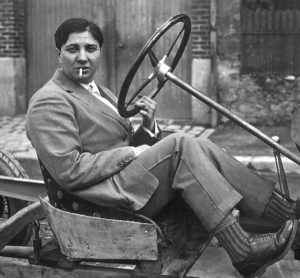
Violette had an unconventional life style. She dressed in men’s clothes. She smoked two packs of cigarettes daily and swore constantly. Her size was intimidating. She was so aggressive in motor racing that she underwent a bilateral mastectomy so she would fit better in the race cars. Her life style upset the French Women’s Athletic Federation and she was barred from the1928 Summer Olympics. After that setback she settled down and owned a car parts store in Paris.
In December 1935, Violette Morris was recruited by the Security Service wing of the Nazi SS to be a secret French agent. She was a guest of Hitler at the 1936 Summer Olympics in Berlin. Later on she gave Germany information about strategic points to enter Paris and schematics for the French army’s main battle tank.
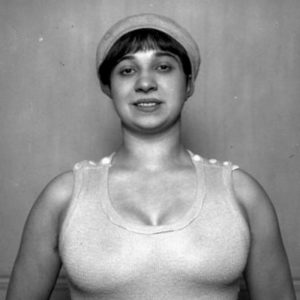
During the German occupation of Paris, she cooperated with the Gestapo. She became known as the ‘Gestapo’s Hyena.’ It was said that she was an interrogator who could get a confession from anyone using a whip and a cigarette lighter.
Morris became a target for the French Resistance. In 1944 she was driving from Normandy to Paris when the Resistance, in cooperation with British Commandos, ambushed her supercharged Citroen. Her body, riddled with machine gun bullets, was left by the side of the road where she was buried.
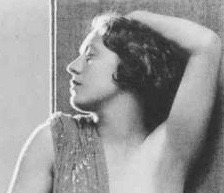
In contrast to Morris, there was petite Helle Nice (December 15, 1900 – October 1, 1984). She was born Mariette Helene Delangle in a small village outside Paris. At age 16 she went to the City of Light to work for artist Rene Carrere as a nude model. Her images appeared on those naughty French postcards.
Carrere encouraged her to take up ballet where she became a very successful dancer under the name Helle Nice. In 1926, she partnered with well known Robert Lisset. They performed in cabarets around Europe. Her income was such that she owned a home and a yacht. Sadly, her dancing career ended in 1929 when she injured a knee avoiding an avalanche while skiing.
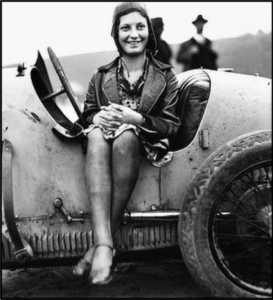
It seems that Nice had always been attracted to fast cars. Soon after her knee injury she was encouraged by her friend Gerard de Courcelles, who had won the 1925 24 hour Le Mans race, to become a professional driver. Nice won the all female 1929 Grand Prix race at the Autodrome de Montlhery with an Omega-Six car.
In the process she set a new world speed record for women. Other racing events made her well known and in 1930s she toured the United States. Nice raced on various tracks driving the American made Miller Special.
On her return to France she caught the eye of Philippe de Rothschild. Soon she shared his bed and his love of automobile racing. He favored Bugattis and introduced her to Ettore Bugatti. He knew an attractive racer when he saw one and added her to his list of drivers.
According to Wikipedia, Nice wowed the crowds wherever she raced her bright blue Bugatti. “She added to her income with a string of product endorsements, including Esso and Lucky Strike. She was featured on thousands of posters helping her become one of the famous people in France. She also earned significant amounts from racing and received entry fees worth (the current equivalent of) $100,000 per race. Although she did not win a Grand Prix race, she was a legitimate competitor, and frequently finished ahead of top male drivers. She competed not only in Grand Prix but also hill climbs and rallies all over Europe, including the famous Monte Carlo Rally.”
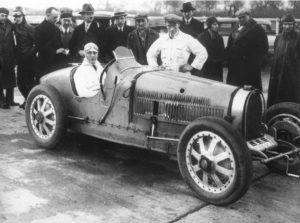
Nice traveled to Brazil in 1936 to compete in the Sao Paulo Grand Prix. She was in third place when a bale of hay was pushed onto the track. Her Alfa Romeo hit it and somersaulted into the air. It crashed into the grandstand killing six people and injuring more than thirty. “Nice was thrown from the car and landed on a soldier who absorbed the full impact of her body saving her life. The force of the impact killed the soldier and because she lay unconscious, she was thought to be dead. Taken to the hospital, she awoke from a coma three days later.” She was discharged two months later … a hero to the Brazilian people.
In 1937 Nice tried to get back into racing but was unsuccessful. During the next several years she competed in rallying. She became discouraged in 1939 when her good friend Jean Bugatti, the son of Ettore, died testing a new vehicle. A month later all racing stopped because of WW ll. During the German occupation of France, Nice spent the years quietly in a home on the French Riviera.
In 1949 many famous race drivers gathered in Monaco to celebrate the first post war Monte Carlo Rally. At a party, famous Grand Prix driver Louis Chiron stood up before the guests and loudly accused Nice of collaborating the with Nazis during the occupation, perhaps confusing her with Violette Morris. Chiron never offered any evidence but his accusation that she was a Gestapo agent was accepted without question. She became “unemployable” and a social outcast.
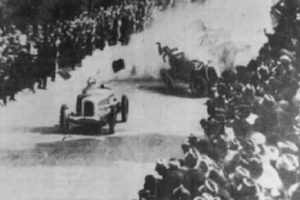
To paraphrase Wikipedia, Nice was a colorful pioneering woman who had successfully competed in more than 70 of the highest events of automobile racing. She spent her final years in a sordid rat-infested apartment in the back alleys of Nice, France living under an assumed name to hide her shame. In 1984 she died penniless, abandoned by her family, and forgotten by the glamorous crowd of Grand Prix racing. Her cremation was paid for by a Parisian charity.
Sources:
http://www.formula1-dictionary.net/women_in_f1.html
